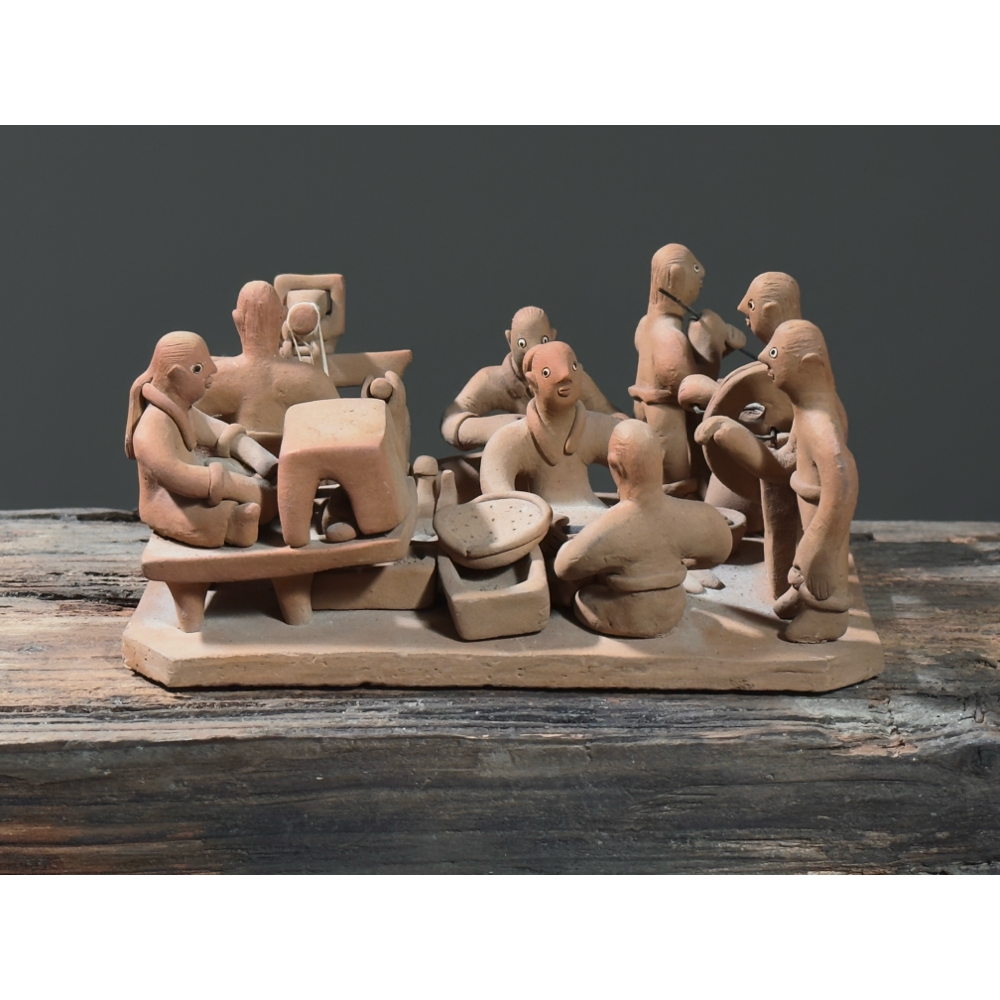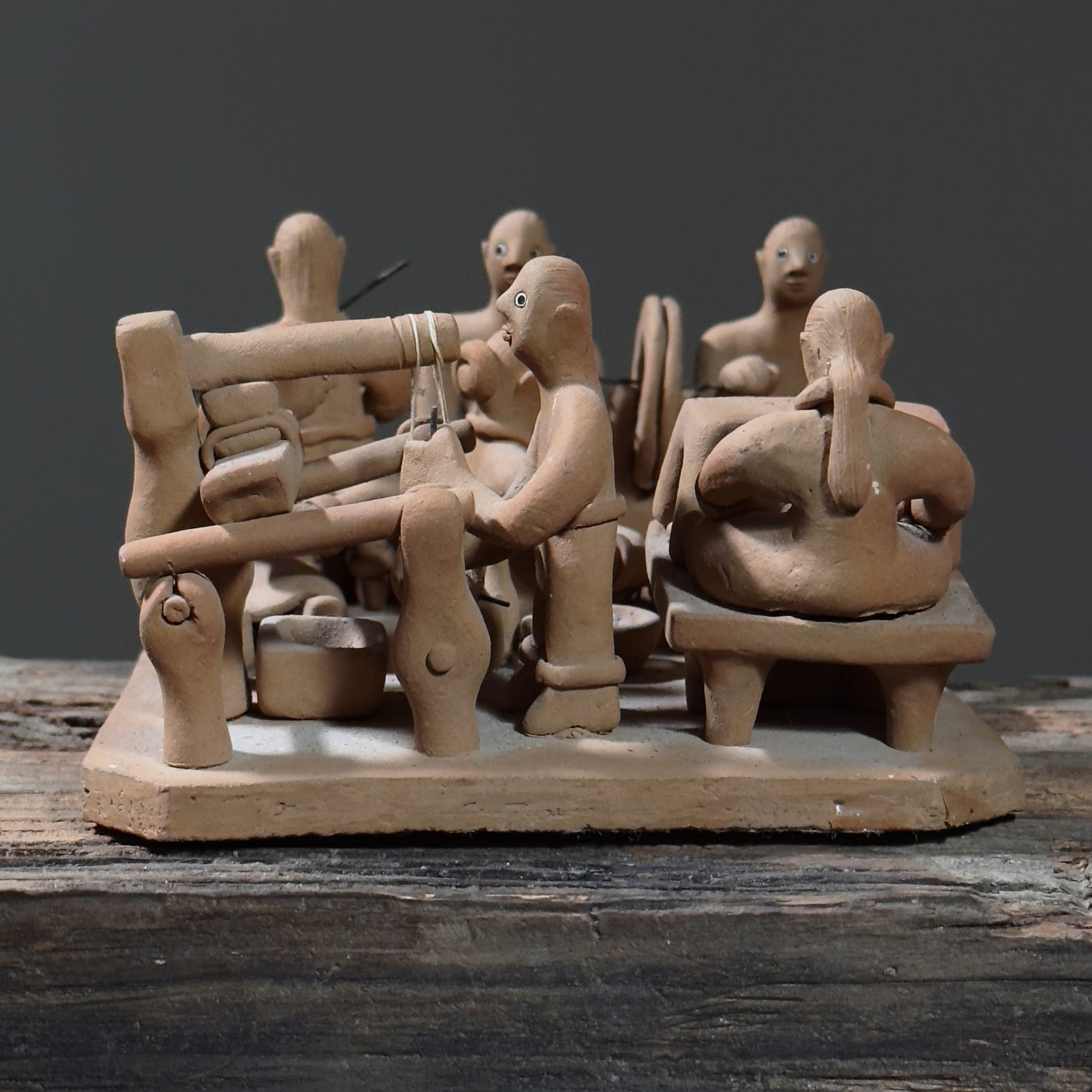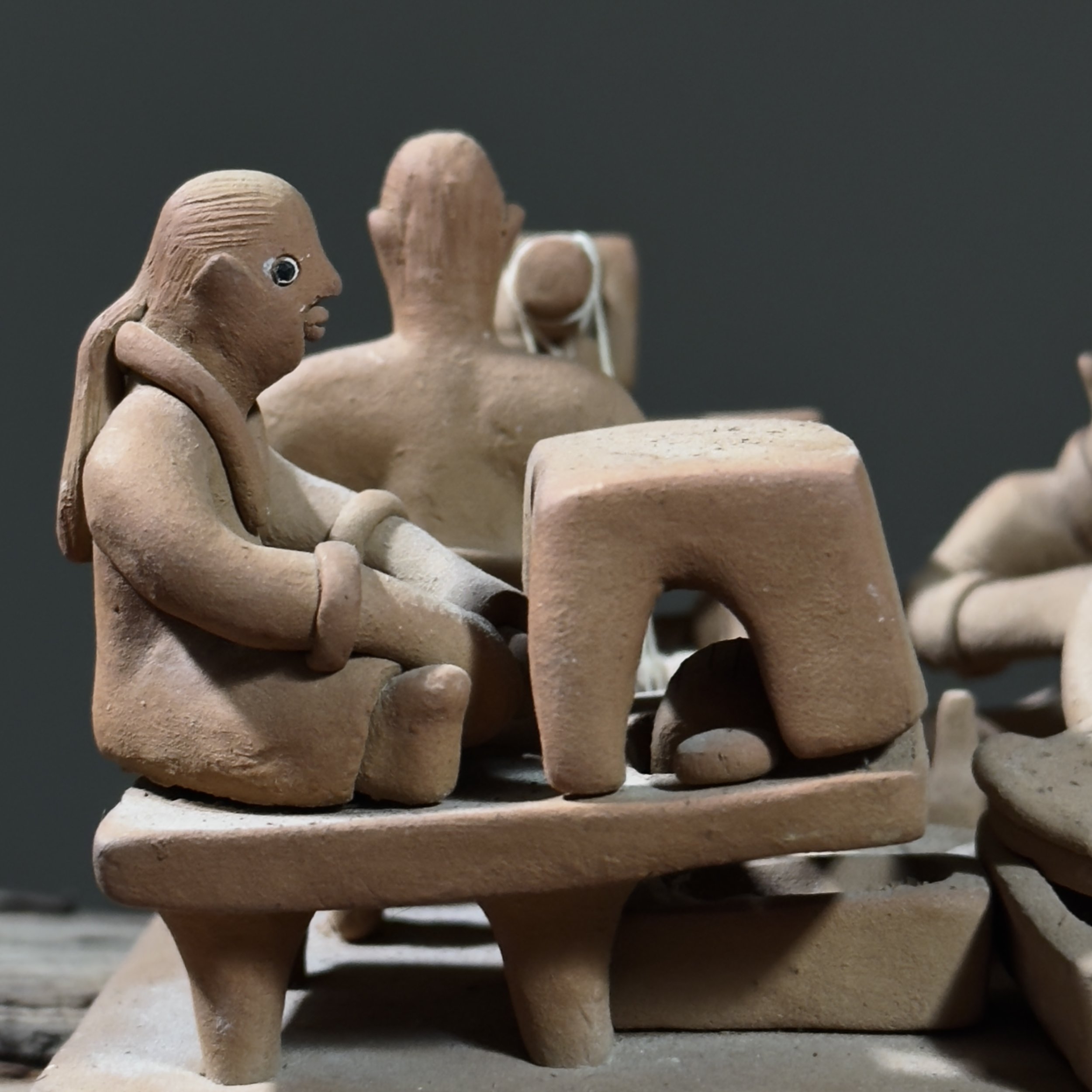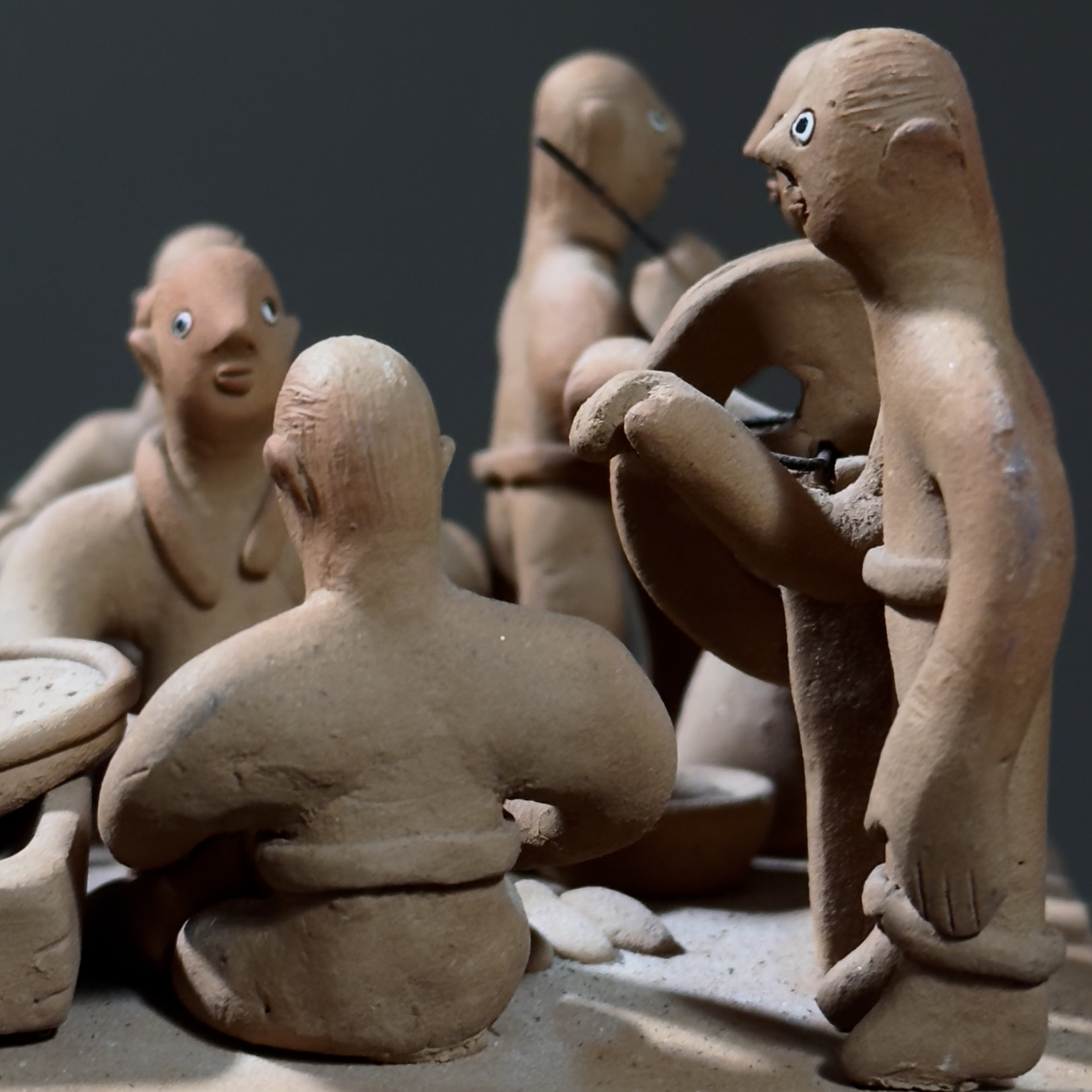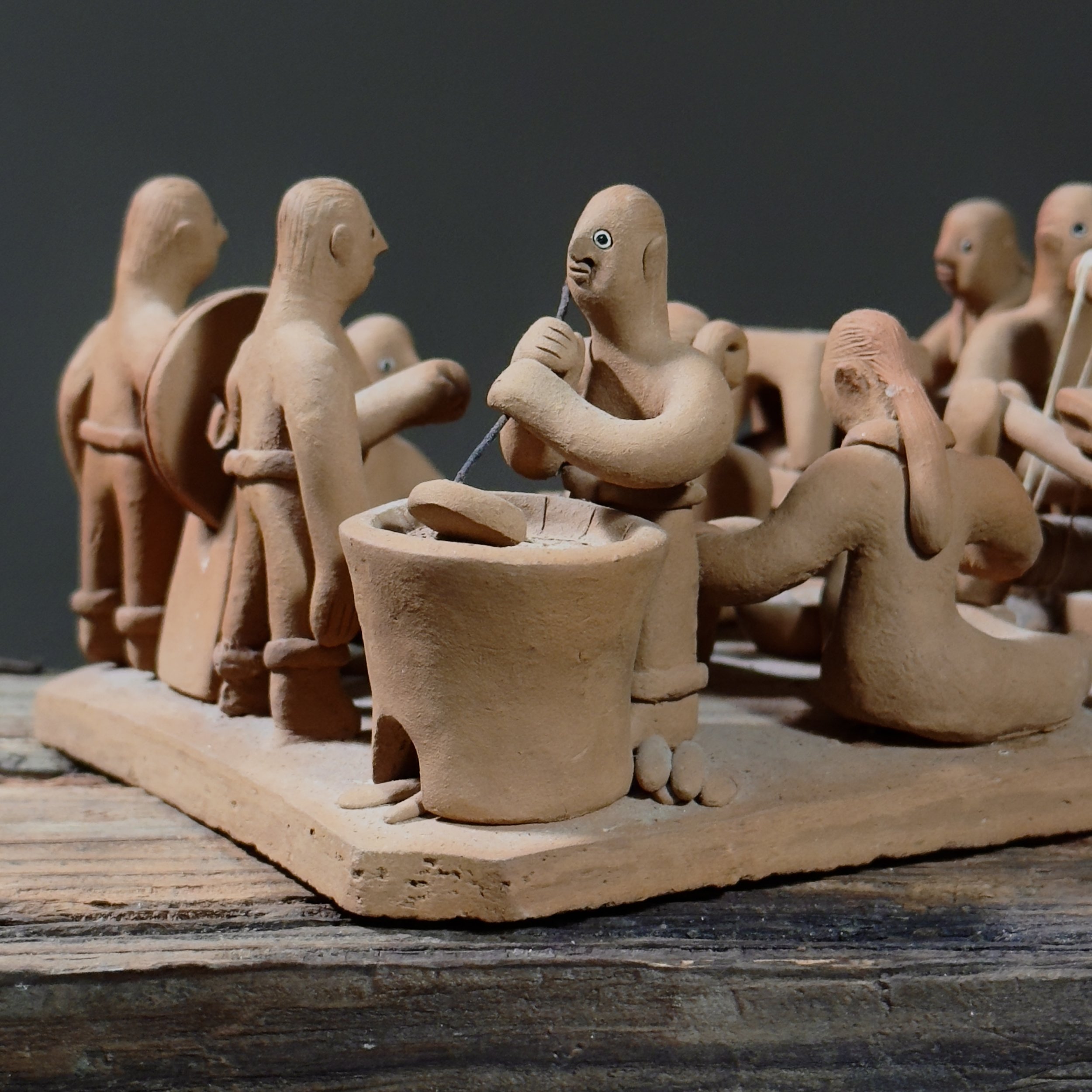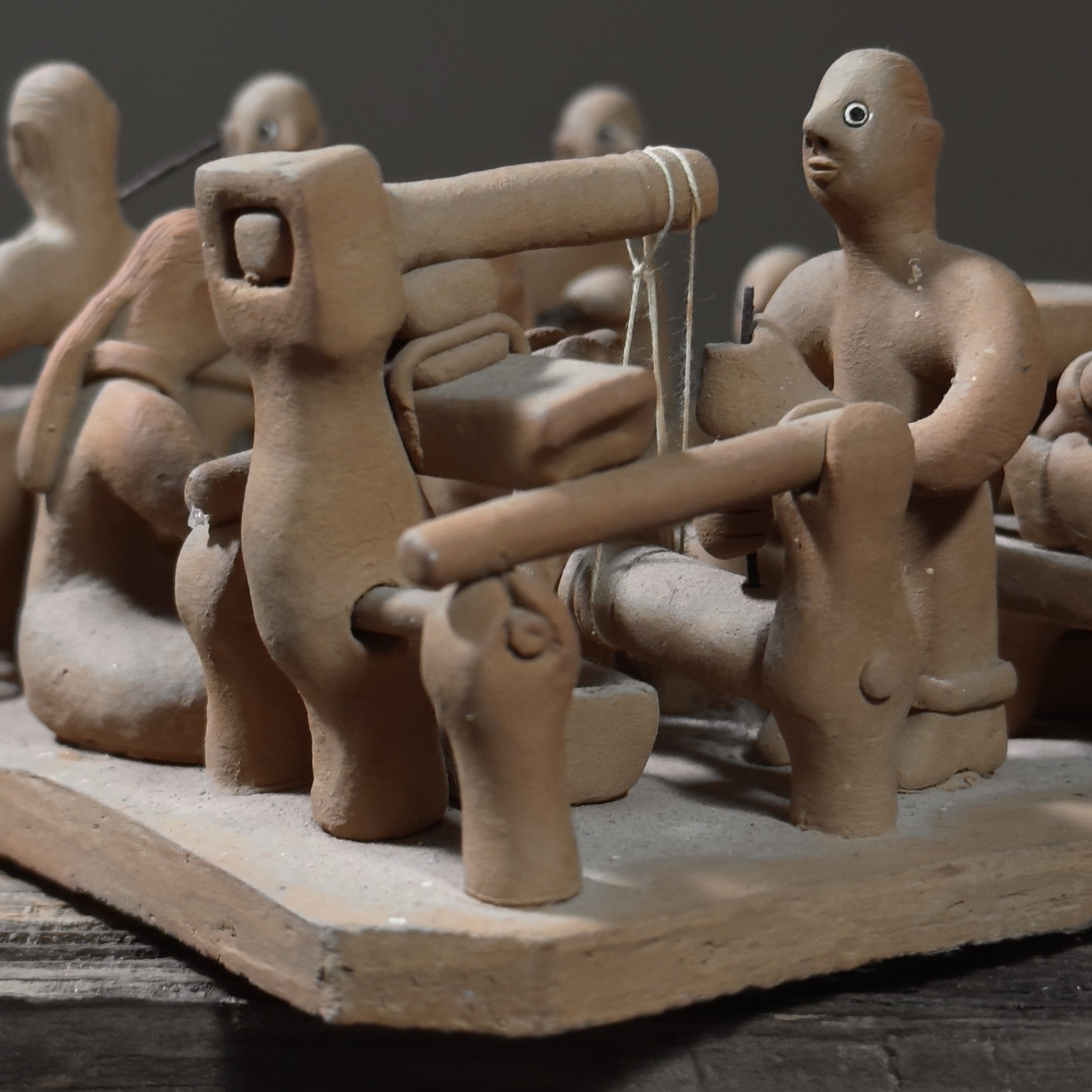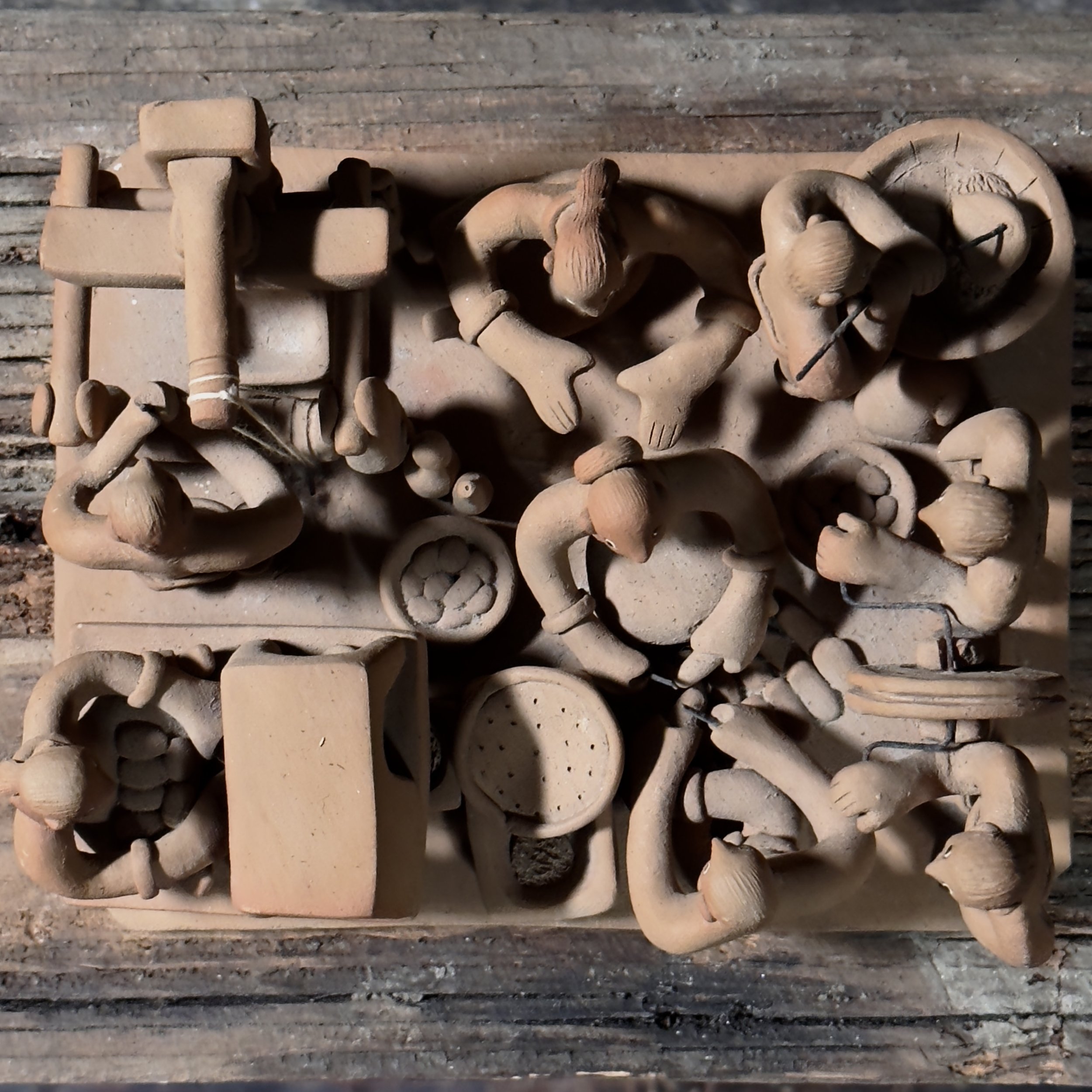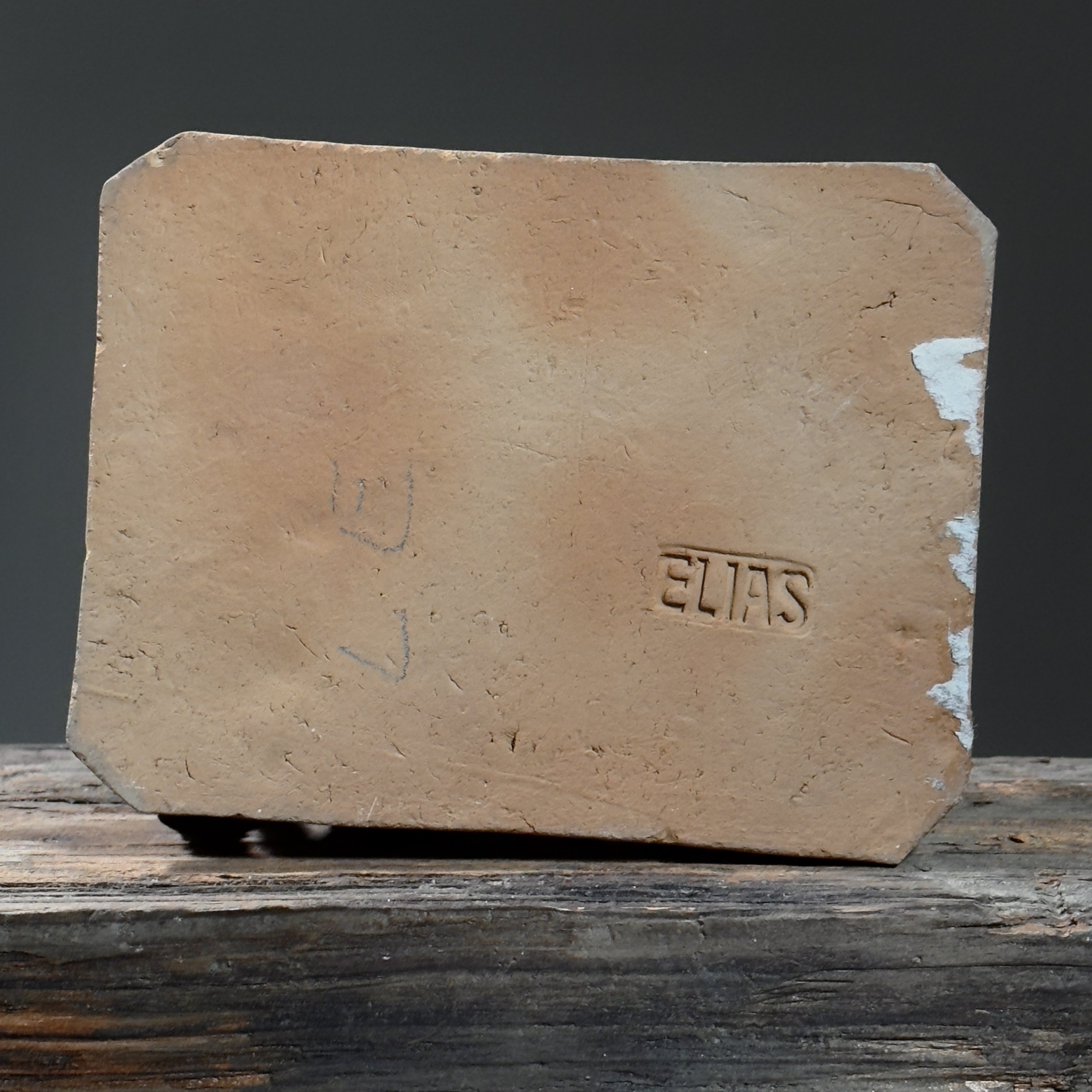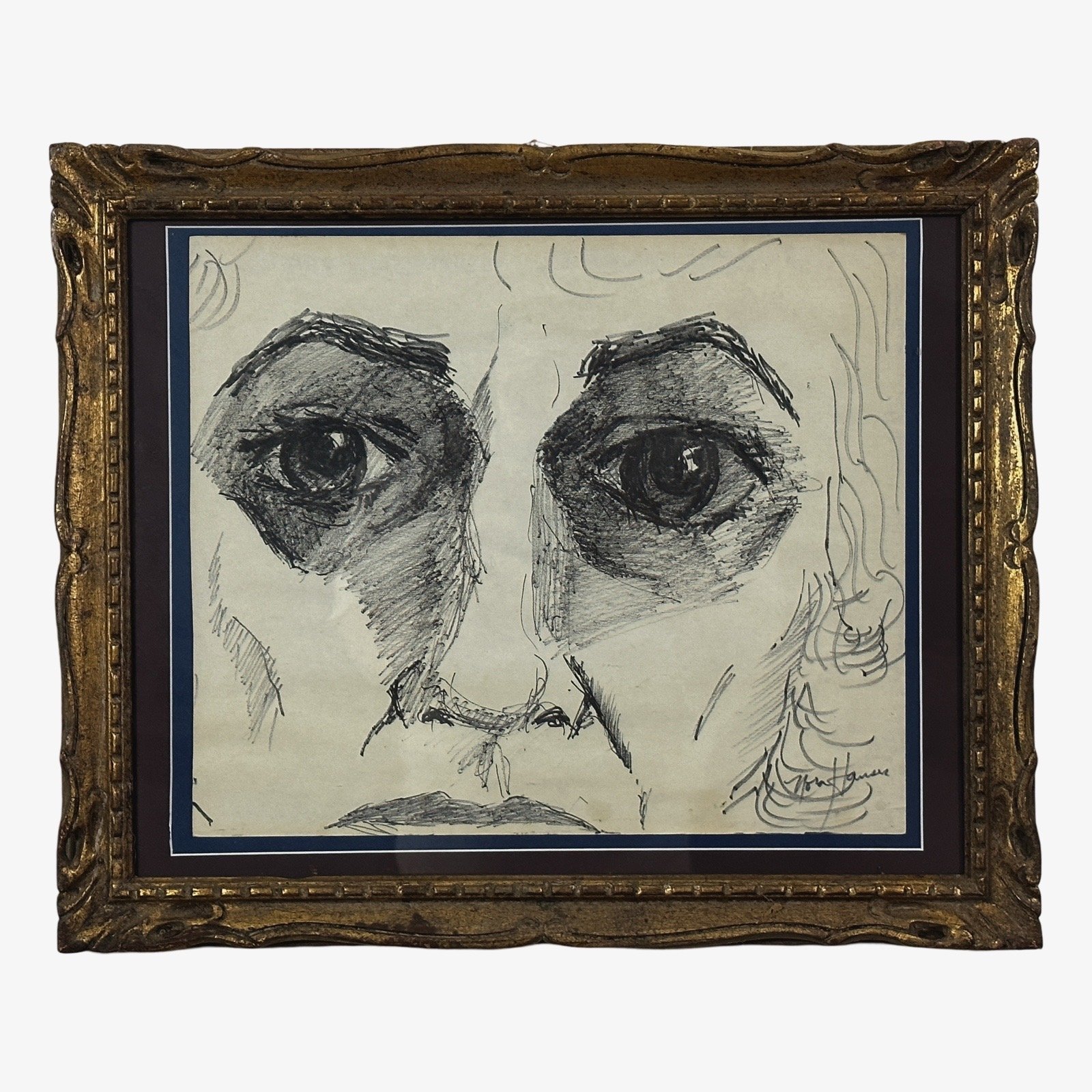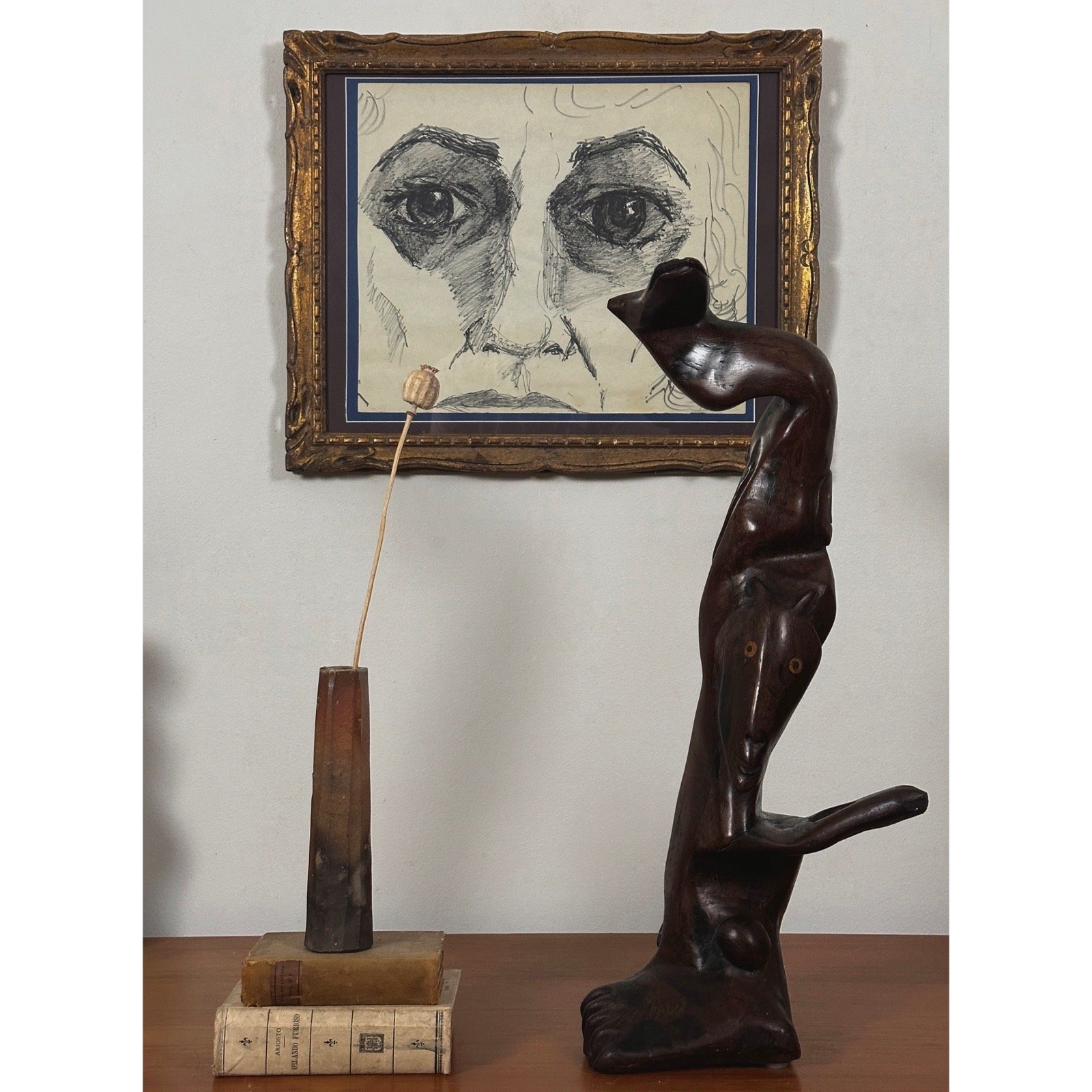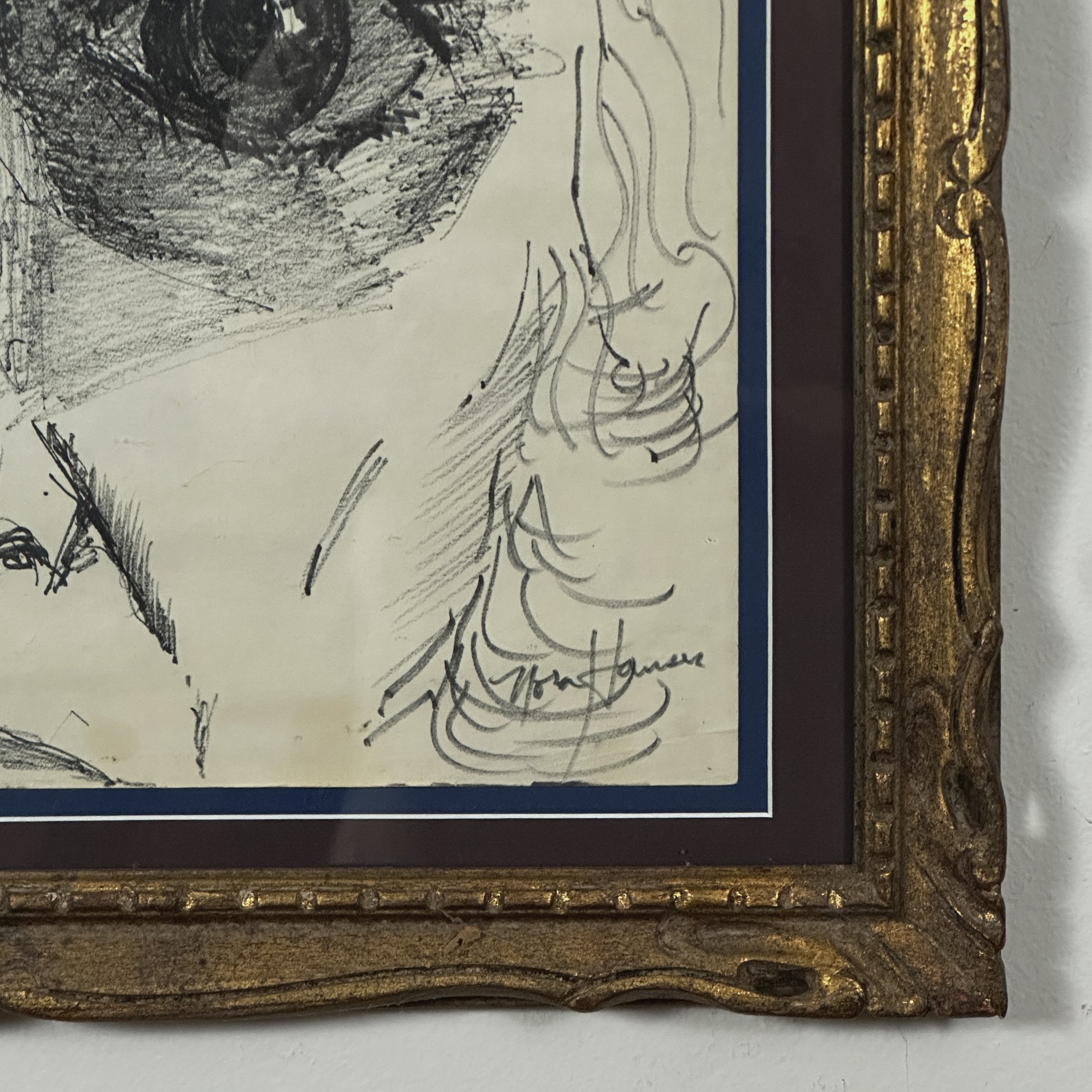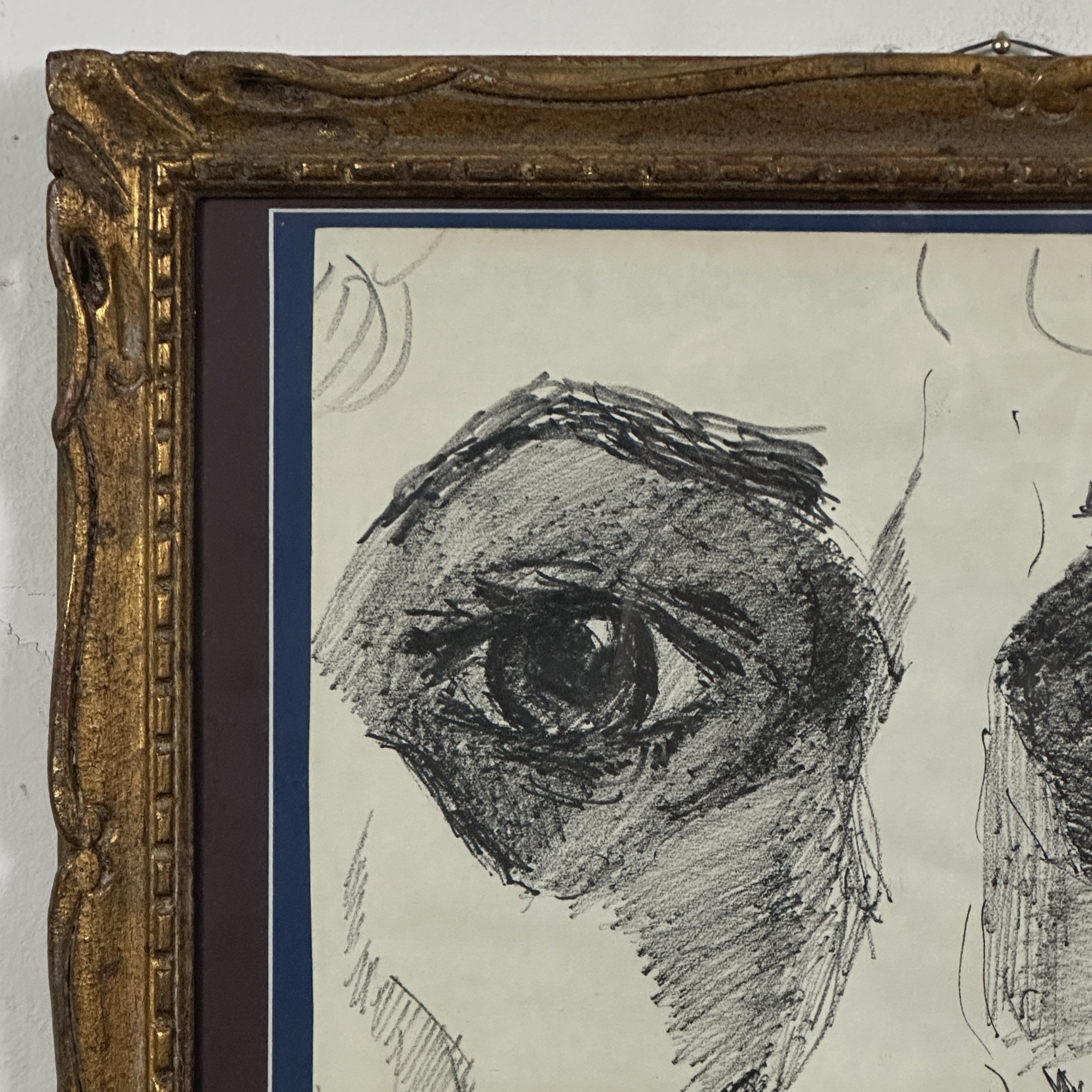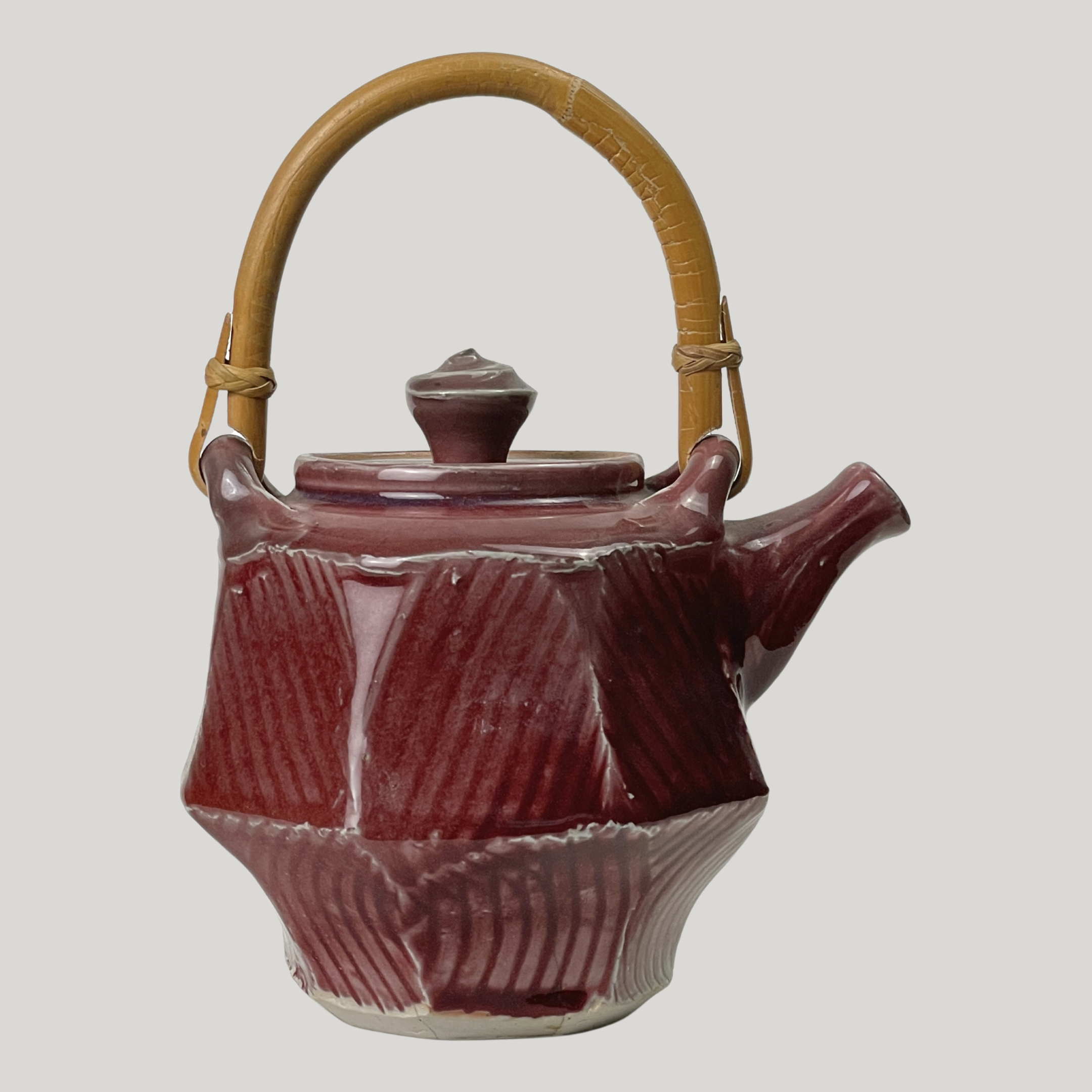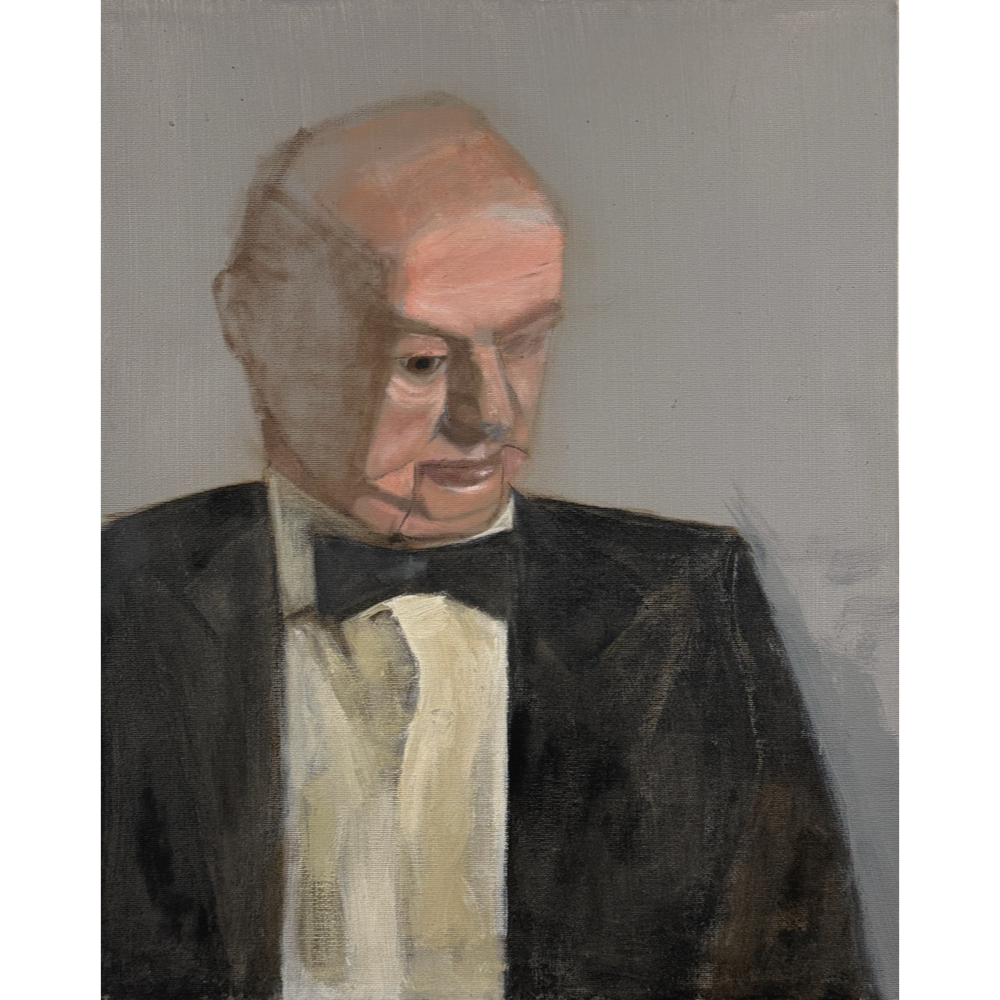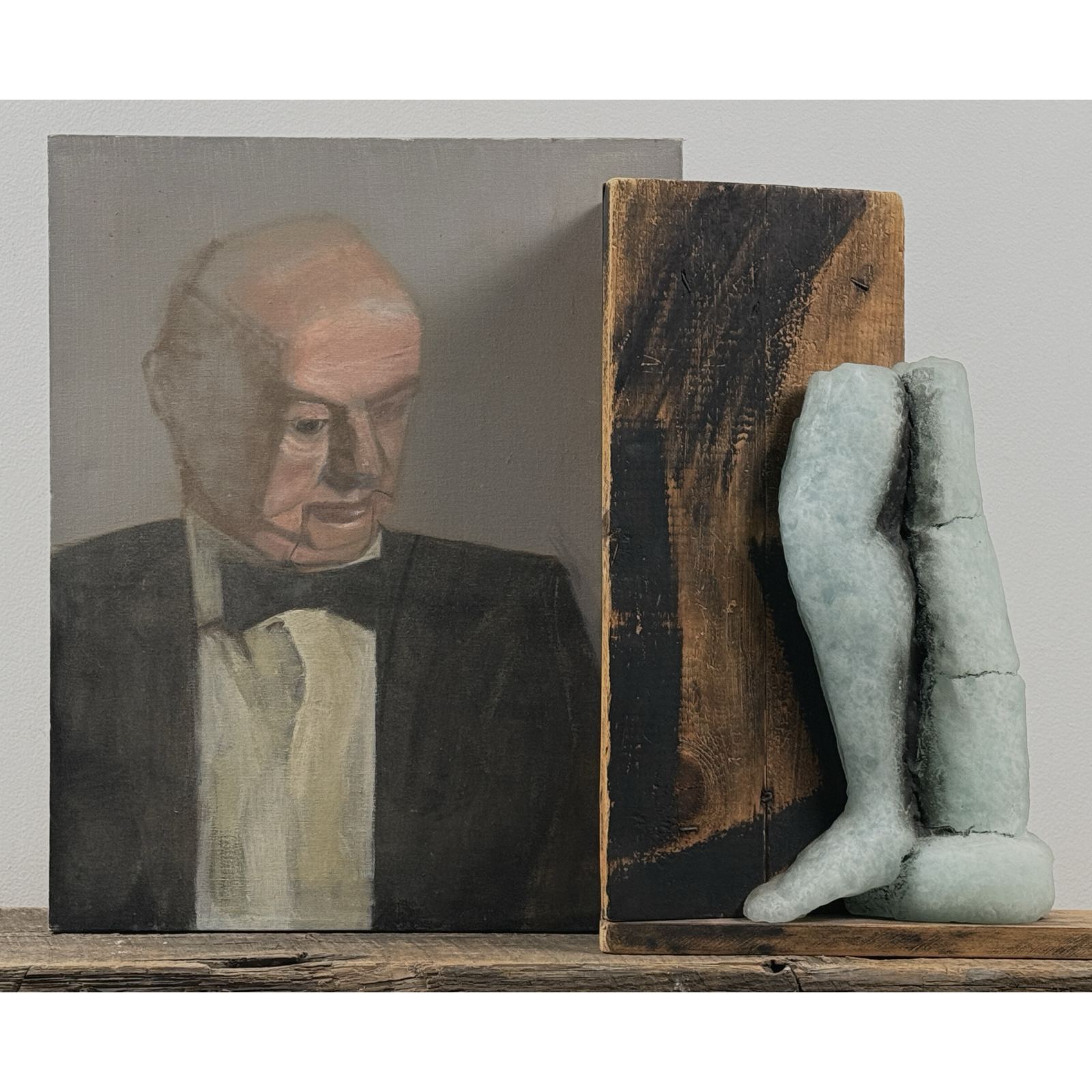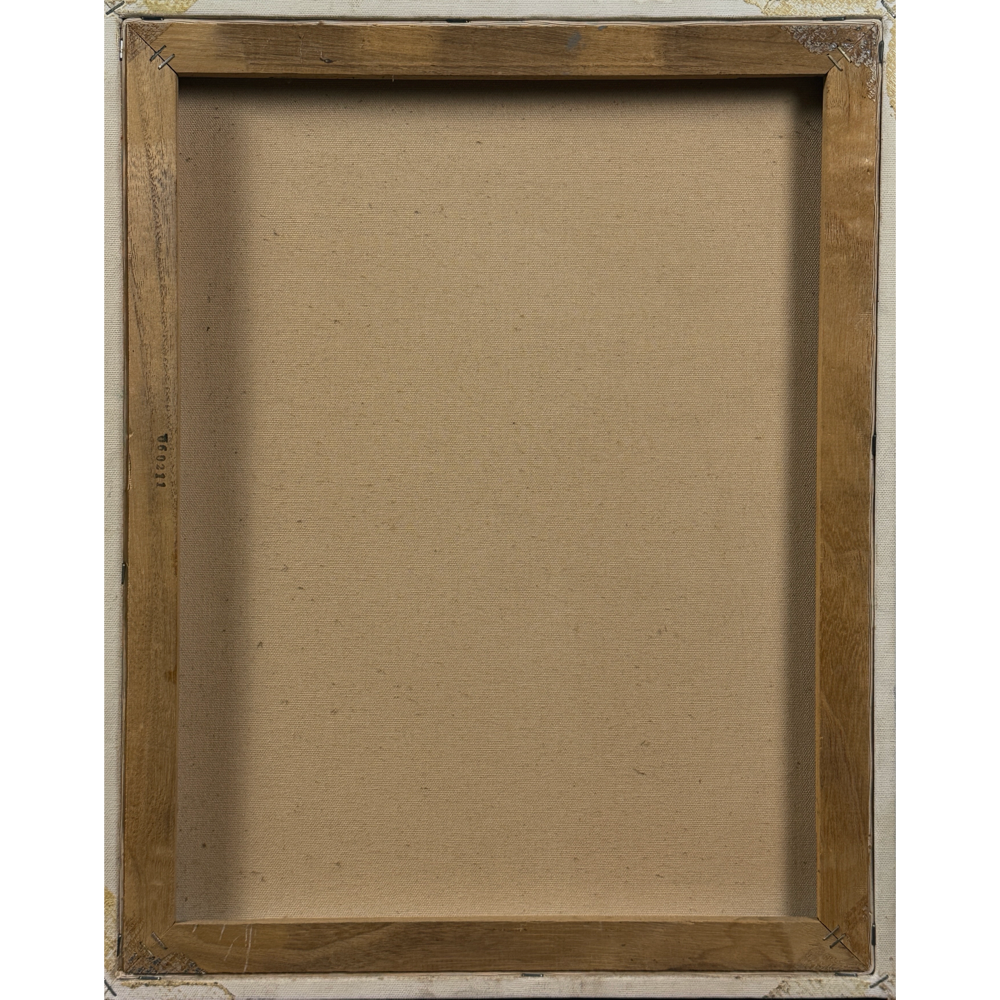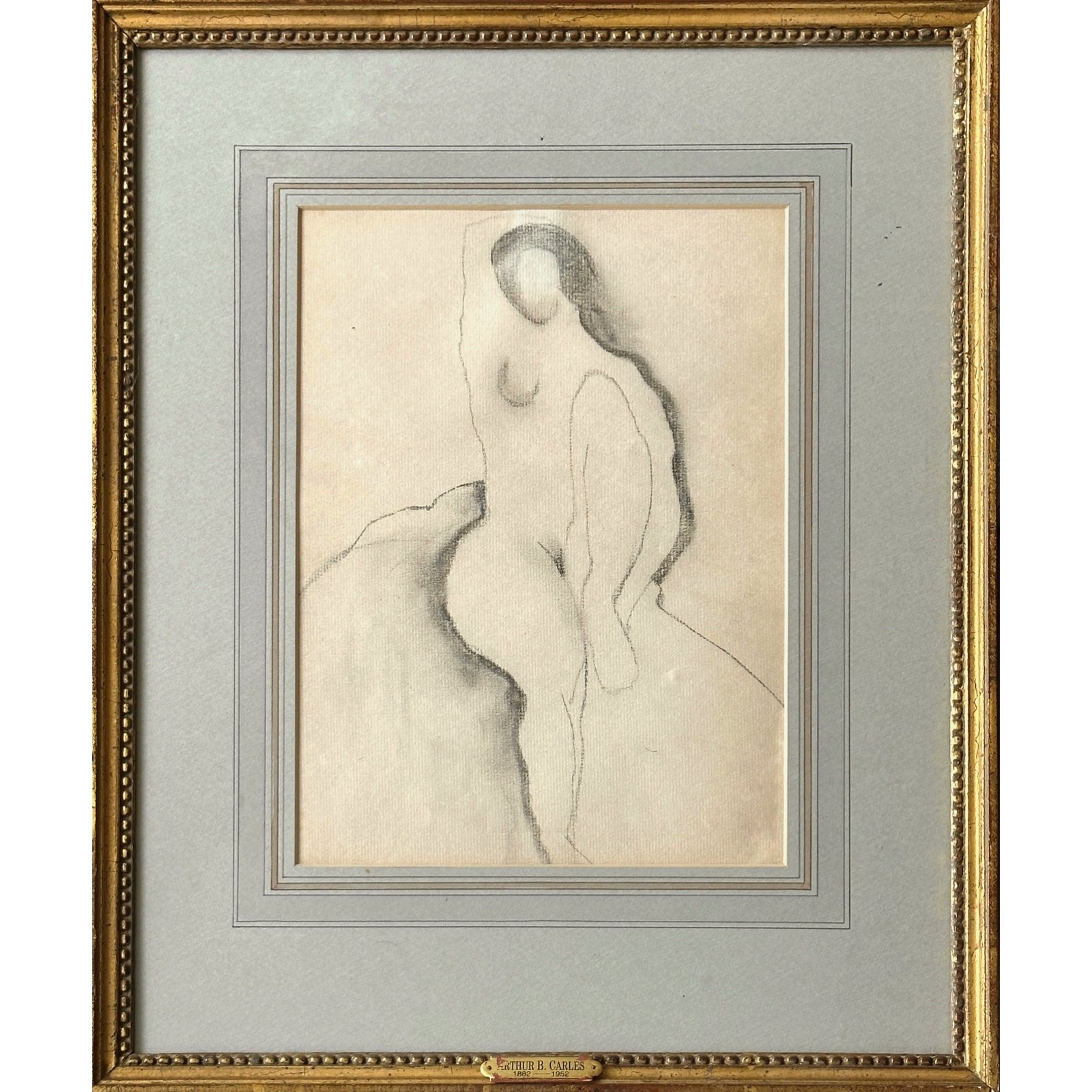 Image 1 of 4
Image 1 of 4

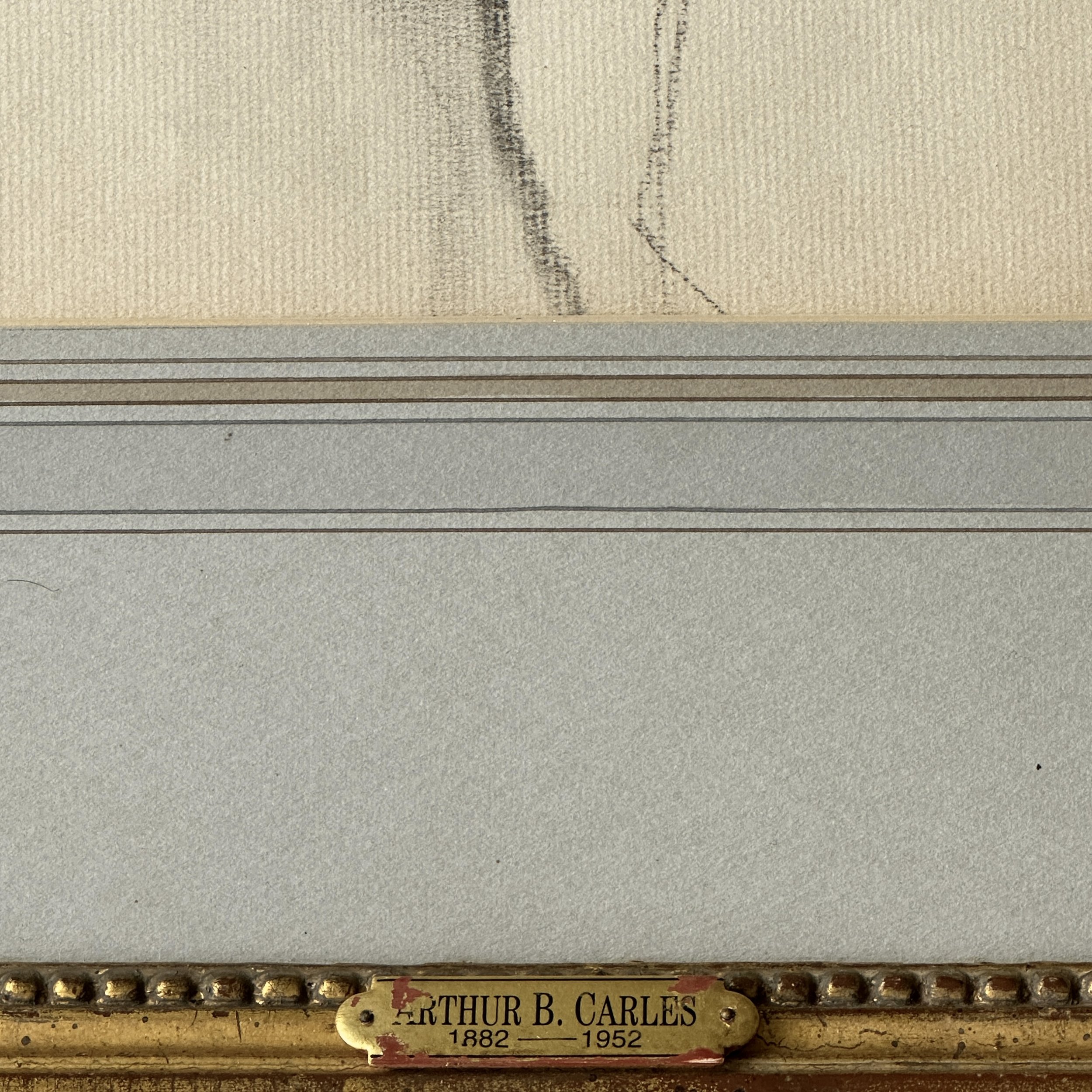 Image 2 of 4
Image 2 of 4

 Image 3 of 4
Image 3 of 4

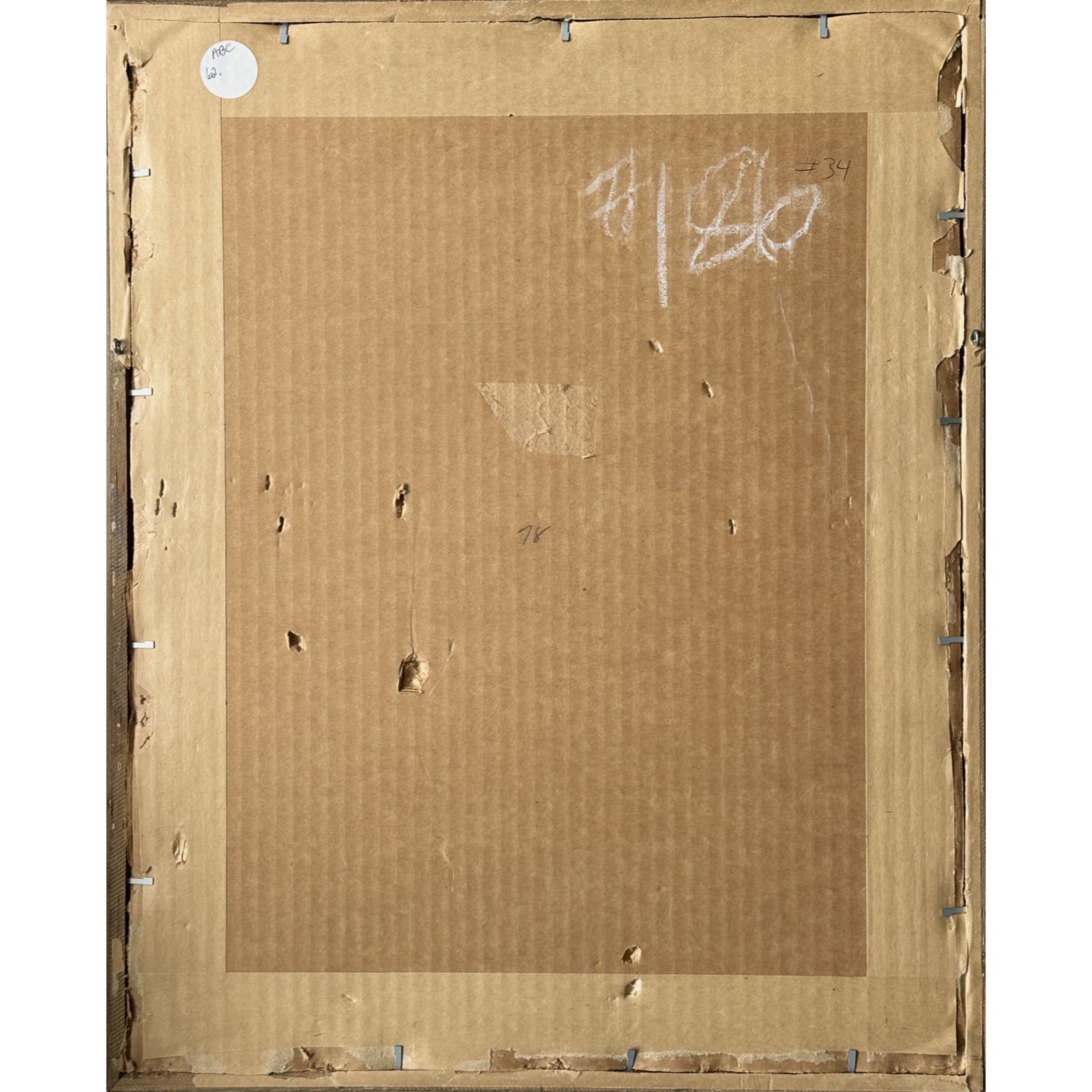 Image 4 of 4
Image 4 of 4





Arthur Beecher Carles (1882-1952) - Nude Study of a Woman (Charcoal on Paper, Framed)
Arthur Beecher Carles (1882-1952) - Nude Study of a Woman (Charcoal on Paper, Framed). Housed under glass in a gilt wood frame with an archival grey matte. In good condition with wear consistent with age. Soft crease in the lower right corner of paper.
Size: 19.5 x 15.5 in
Arthur Beecher Carles1882–1952
American artist Arthur Beecher Carles was born in Philadelphia, PA in 1882. Upon graduating High School in 1900, Carles quickly began his artistic education at the prestigious Pennsylvania Academy of the Fine Arts (PAFA). A student there from 1900 until 1907, Carles worked alongside fellow emerging painters such as Thomas Anshutz, Hugh Breckenridge, Henry Bainbridge McCarter and Cecilia Beaux. He was heavily influenced by his teacher William Merritt Chase, who introduced him to the painterly techniques of Velasquez, Manet, and Singer Sargent. While at school, Carles won the William Emlen Cresson Short-Term Traveling Scholarship twice, once in 1905, taking him to Spain, England, and France with fellow classmate and fellow Impressionist painter George Oberteuffer, and again in 1907, bringing him back to continue his work in France.
Once his studies at PAFA were finished in 1907, Carles remained in France and began to develop like-minded relationships that connected him to the vibrant artistic culture of early 20th Century France. He had a close friendship with art critics and collectors, Leo and Gertrude Stein who introduced him to the works of Matisse and Cezanne in their Paris apartment. Carles also became close with artists John Marin and Eduard Steichen who would eventually introduce him to Alfred Stieglitz. Steichen took Carles to the small town of Voulangis, France in the summer of 1908 where he experimented with vivid colors and dramatic compositions while painting the surrounding landscapes. Carles exhibited six of these landscapes for the first time at the Salon d’Automne that same year.
Carles returned to America in 1910 to begin exhibiting his work in the States. In March of that year, some of his paintings were included in the Younger American Painters show held at his friend Alfred Stieglitz’s New York City gallery, 291. Carles would have his first solo show at 291 a few years later in January of 1912. From June to October of 1912, Carles traveled back to France once more to exhibit his paintings at the Salon d’Automne for the second time. During this early stage of his career, Carles established himself as an important link between Paris and Philadelphia, which in turn deepened the artistic relationship between Europe and America. His works were included in the famous 1913 Armory show, which was the first major exhibition in America that joined the work of progressive American and European artists, introducing the greater population to burgeoning modernist ideas.
By the late 1910s, Arthur Carles had established himself as a true American Modernist with an interest in sharing his artistic ideology with those around him. Carles began teaching at PAFA as a drawing and painting instructor in 1917. In his new role, Carles became instrumental in bringing modern and abstract works to the attention of the public through exhibitions at PAFA. In 1921 he co-curated an exhibition featuring works by Picasso and Matisse in addition to other American Modernists who were influenced by Post-Impressionist and Cubist styles. Carles, along with Henry McCarter, convinced Dr. Albert Barnes to exhibit his famous modern collection at PAFA in 1923. Carles’ own work throughout this period began to change as he experimented with cubist compositions and striking planes of color.
In 1925, Carles was let go from his teaching position at PAFA for frequent tardiness and absences, but he continued to teach his students in private lessons well into the 1930s. The second half of the 1920s also saw Carles divorce from his wife Mercedes de Cordoba with whom he shared a daughter, also named Mercedes. Carles’s daughter would go on to marry photographer Herbert Matter and become a famous artist in her own right. Following his divorce and later firing from PAFA, Carles slipped into a depression that would continue into the 1930s and profoundly affect the style of his work. Throughout this decade, Carles channeled his despair into paintings that seemingly became more and more abstract and reflected his growing interest in Cubism. The colorful and experimental works he made during this time would earn him his reputation as one of America’s leading Abstract Expressionists.
Despite his impressive creative output, Carles was frequently hospitalized for problems related to alcoholism until eventually suffering a stroke in 1941, which left him unable to paint and confined to a wheelchair for the rest of his life. He passed away in 1952 at a nursing home in the Philadelphia neighborhood of Chestnut Hill. Following his passing, retrospectives of his work were hosted at PAFA in 1953 and Graham Gallery, New York in 1958.
Arthur Beecher Carles was one of America’s most brilliant Colorists with a style that ranged from academic landscapes to Impressionism, to precursors of Abstract Expressionism. His work emphasized the relationship between color and composition and was executed with a boldness that set him apart from the many talented American painters navigating the early 20th Century. (Rago Arts)
Arthur Beecher Carles (1882-1952) - Nude Study of a Woman (Charcoal on Paper, Framed). Housed under glass in a gilt wood frame with an archival grey matte. In good condition with wear consistent with age. Soft crease in the lower right corner of paper.
Size: 19.5 x 15.5 in
Arthur Beecher Carles1882–1952
American artist Arthur Beecher Carles was born in Philadelphia, PA in 1882. Upon graduating High School in 1900, Carles quickly began his artistic education at the prestigious Pennsylvania Academy of the Fine Arts (PAFA). A student there from 1900 until 1907, Carles worked alongside fellow emerging painters such as Thomas Anshutz, Hugh Breckenridge, Henry Bainbridge McCarter and Cecilia Beaux. He was heavily influenced by his teacher William Merritt Chase, who introduced him to the painterly techniques of Velasquez, Manet, and Singer Sargent. While at school, Carles won the William Emlen Cresson Short-Term Traveling Scholarship twice, once in 1905, taking him to Spain, England, and France with fellow classmate and fellow Impressionist painter George Oberteuffer, and again in 1907, bringing him back to continue his work in France.
Once his studies at PAFA were finished in 1907, Carles remained in France and began to develop like-minded relationships that connected him to the vibrant artistic culture of early 20th Century France. He had a close friendship with art critics and collectors, Leo and Gertrude Stein who introduced him to the works of Matisse and Cezanne in their Paris apartment. Carles also became close with artists John Marin and Eduard Steichen who would eventually introduce him to Alfred Stieglitz. Steichen took Carles to the small town of Voulangis, France in the summer of 1908 where he experimented with vivid colors and dramatic compositions while painting the surrounding landscapes. Carles exhibited six of these landscapes for the first time at the Salon d’Automne that same year.
Carles returned to America in 1910 to begin exhibiting his work in the States. In March of that year, some of his paintings were included in the Younger American Painters show held at his friend Alfred Stieglitz’s New York City gallery, 291. Carles would have his first solo show at 291 a few years later in January of 1912. From June to October of 1912, Carles traveled back to France once more to exhibit his paintings at the Salon d’Automne for the second time. During this early stage of his career, Carles established himself as an important link between Paris and Philadelphia, which in turn deepened the artistic relationship between Europe and America. His works were included in the famous 1913 Armory show, which was the first major exhibition in America that joined the work of progressive American and European artists, introducing the greater population to burgeoning modernist ideas.
By the late 1910s, Arthur Carles had established himself as a true American Modernist with an interest in sharing his artistic ideology with those around him. Carles began teaching at PAFA as a drawing and painting instructor in 1917. In his new role, Carles became instrumental in bringing modern and abstract works to the attention of the public through exhibitions at PAFA. In 1921 he co-curated an exhibition featuring works by Picasso and Matisse in addition to other American Modernists who were influenced by Post-Impressionist and Cubist styles. Carles, along with Henry McCarter, convinced Dr. Albert Barnes to exhibit his famous modern collection at PAFA in 1923. Carles’ own work throughout this period began to change as he experimented with cubist compositions and striking planes of color.
In 1925, Carles was let go from his teaching position at PAFA for frequent tardiness and absences, but he continued to teach his students in private lessons well into the 1930s. The second half of the 1920s also saw Carles divorce from his wife Mercedes de Cordoba with whom he shared a daughter, also named Mercedes. Carles’s daughter would go on to marry photographer Herbert Matter and become a famous artist in her own right. Following his divorce and later firing from PAFA, Carles slipped into a depression that would continue into the 1930s and profoundly affect the style of his work. Throughout this decade, Carles channeled his despair into paintings that seemingly became more and more abstract and reflected his growing interest in Cubism. The colorful and experimental works he made during this time would earn him his reputation as one of America’s leading Abstract Expressionists.
Despite his impressive creative output, Carles was frequently hospitalized for problems related to alcoholism until eventually suffering a stroke in 1941, which left him unable to paint and confined to a wheelchair for the rest of his life. He passed away in 1952 at a nursing home in the Philadelphia neighborhood of Chestnut Hill. Following his passing, retrospectives of his work were hosted at PAFA in 1953 and Graham Gallery, New York in 1958.
Arthur Beecher Carles was one of America’s most brilliant Colorists with a style that ranged from academic landscapes to Impressionism, to precursors of Abstract Expressionism. His work emphasized the relationship between color and composition and was executed with a boldness that set him apart from the many talented American painters navigating the early 20th Century. (Rago Arts)
Arthur Beecher Carles (1882-1952) - Nude Study of a Woman (Charcoal on Paper, Framed). Housed under glass in a gilt wood frame with an archival grey matte. In good condition with wear consistent with age. Soft crease in the lower right corner of paper.
Size: 19.5 x 15.5 in
Arthur Beecher Carles1882–1952
American artist Arthur Beecher Carles was born in Philadelphia, PA in 1882. Upon graduating High School in 1900, Carles quickly began his artistic education at the prestigious Pennsylvania Academy of the Fine Arts (PAFA). A student there from 1900 until 1907, Carles worked alongside fellow emerging painters such as Thomas Anshutz, Hugh Breckenridge, Henry Bainbridge McCarter and Cecilia Beaux. He was heavily influenced by his teacher William Merritt Chase, who introduced him to the painterly techniques of Velasquez, Manet, and Singer Sargent. While at school, Carles won the William Emlen Cresson Short-Term Traveling Scholarship twice, once in 1905, taking him to Spain, England, and France with fellow classmate and fellow Impressionist painter George Oberteuffer, and again in 1907, bringing him back to continue his work in France.
Once his studies at PAFA were finished in 1907, Carles remained in France and began to develop like-minded relationships that connected him to the vibrant artistic culture of early 20th Century France. He had a close friendship with art critics and collectors, Leo and Gertrude Stein who introduced him to the works of Matisse and Cezanne in their Paris apartment. Carles also became close with artists John Marin and Eduard Steichen who would eventually introduce him to Alfred Stieglitz. Steichen took Carles to the small town of Voulangis, France in the summer of 1908 where he experimented with vivid colors and dramatic compositions while painting the surrounding landscapes. Carles exhibited six of these landscapes for the first time at the Salon d’Automne that same year.
Carles returned to America in 1910 to begin exhibiting his work in the States. In March of that year, some of his paintings were included in the Younger American Painters show held at his friend Alfred Stieglitz’s New York City gallery, 291. Carles would have his first solo show at 291 a few years later in January of 1912. From June to October of 1912, Carles traveled back to France once more to exhibit his paintings at the Salon d’Automne for the second time. During this early stage of his career, Carles established himself as an important link between Paris and Philadelphia, which in turn deepened the artistic relationship between Europe and America. His works were included in the famous 1913 Armory show, which was the first major exhibition in America that joined the work of progressive American and European artists, introducing the greater population to burgeoning modernist ideas.
By the late 1910s, Arthur Carles had established himself as a true American Modernist with an interest in sharing his artistic ideology with those around him. Carles began teaching at PAFA as a drawing and painting instructor in 1917. In his new role, Carles became instrumental in bringing modern and abstract works to the attention of the public through exhibitions at PAFA. In 1921 he co-curated an exhibition featuring works by Picasso and Matisse in addition to other American Modernists who were influenced by Post-Impressionist and Cubist styles. Carles, along with Henry McCarter, convinced Dr. Albert Barnes to exhibit his famous modern collection at PAFA in 1923. Carles’ own work throughout this period began to change as he experimented with cubist compositions and striking planes of color.
In 1925, Carles was let go from his teaching position at PAFA for frequent tardiness and absences, but he continued to teach his students in private lessons well into the 1930s. The second half of the 1920s also saw Carles divorce from his wife Mercedes de Cordoba with whom he shared a daughter, also named Mercedes. Carles’s daughter would go on to marry photographer Herbert Matter and become a famous artist in her own right. Following his divorce and later firing from PAFA, Carles slipped into a depression that would continue into the 1930s and profoundly affect the style of his work. Throughout this decade, Carles channeled his despair into paintings that seemingly became more and more abstract and reflected his growing interest in Cubism. The colorful and experimental works he made during this time would earn him his reputation as one of America’s leading Abstract Expressionists.
Despite his impressive creative output, Carles was frequently hospitalized for problems related to alcoholism until eventually suffering a stroke in 1941, which left him unable to paint and confined to a wheelchair for the rest of his life. He passed away in 1952 at a nursing home in the Philadelphia neighborhood of Chestnut Hill. Following his passing, retrospectives of his work were hosted at PAFA in 1953 and Graham Gallery, New York in 1958.
Arthur Beecher Carles was one of America’s most brilliant Colorists with a style that ranged from academic landscapes to Impressionism, to precursors of Abstract Expressionism. His work emphasized the relationship between color and composition and was executed with a boldness that set him apart from the many talented American painters navigating the early 20th Century. (Rago Arts)

